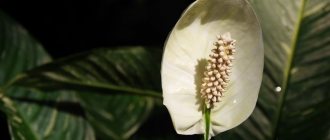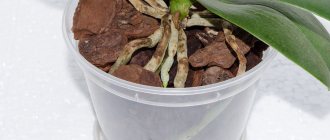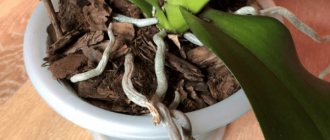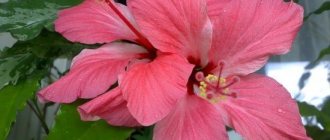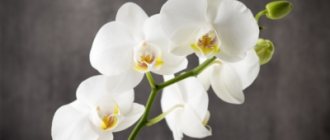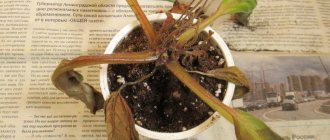It is believed that spathiphyllum or “female happiness” is a real vacuum cleaner; it perfectly cleans the air of dust and harmful fumes, and reduces the harm from radiation from office equipment. Therefore, it is recommended to start it in offices, and at home to place it in the living room or office, where there is a computer and TV. In addition, there is evidence that this plant absorbs formaldehyde from the air. (1) Considering the unpretentiousness of the flower and the ability to bloom almost continuously, the popular love for this native of South America becomes understandable.
- if a single woman plants a flower, she will soon find her feminine happiness (that’s why spathiphyllum is called that);
- spathiphyllum improves the energy of the house and is able to give the owners well-being and happiness;
- a flower is a kind of barometer of mood - if there are frequent scandals and quarrels in the house, there is no mutual understanding, then the flower begins to dry out, stops blooming and may die;
- if spathiphyllum blooms in your house, then very soon you may have a long-awaited baby - it is believed that this flower helps even those women who have already despaired of becoming a mother.
Of course, these are all nothing more than myths, but we’ll tell you only the truth about how to care for them.
Types of flower female happiness (spathiphyllum)
The genus Spathiphyllum from the Araceae family includes about 50 species. (2) Only a few of the most unpretentious ones are grown at home.
Spathiphyllum wallisii. This species was discovered in Colombia at the end of the 19th century. The species is named after Gustov Willis, a German plant collector. The plant reaches a height of 60 cm, its leaves are large, up to 25 cm (and the petiole is the same length), glossy, with spectacular wavy edges. Blooms in late autumn or winter. The flower is a yellow spadix with a white spathe, which over time acquires a pale green hue.
Within this species, about 40 varieties have been bred, which differ in size, shape of leaves and inflorescences.
- Domino (Domino) - about 50 cm high with variegated leaves: numerous white spots and specks are scattered on a dark green background, a white blanket, a flower with a faint pleasant aroma;
- Gemini . This variety is a variegated mutation of the Domina variety. Its leaves are dark green with numerous light spots;
- Picasso - with numerous large white strokes on a green background, some leaves are almost completely white, the spathe is white;
- Chopin is one of the most popular varieties, about 35 cm high, with elongated green glossy leaves, a flower with a white cover and a pleasant aroma;
- Mauna Loa - with large dark green leaves up to 20 cm long and a large white blanket.
View of Picasso. Photo: pexels.com
View of Chopin. Photo: pexels.com
Another popular species comes from Colombia. The plant is up to 50 cm high with large leaves up to 25 cm long. They have a beautiful velvety dark green color. Up to 40 leaves are formed on one plant. The cob is creamy, the spathe is first white and then turns green. It blooms profusely - with good care, a flower bud is formed in the axil of each leaf, therefore, there can be up to 40 flowers.
Spathiphyllum heliconiifolium. This species is native to the tropical forests of Brazil. The plant is very large, up to 1 m high with leaves up to 50 cm long. They are dark green, glossy, wavy at the edges. The cob is up to 10 cm long, at first white, and then darkens almost to black. The spathe is white, oval, almost twice as long as the cob.
Spathiphyllum cannifolium. Originally from Venezuela. Its leaves are similar to those of popular garden flowers - cannas. They reach a length of 80 cm, velvety, bright green. The cob is yellow-green, the spathe is white-green. The flowers are fragrant.
Spoon-shaped spathiphyllum (Spathiphyllum cochlearispathum). Native to the tropical forests of Brazil. The plant is large, about 1 m high. The leaves are up to 40 cm long, dark green, glossy, on long petioles. The cob is white, the spathe is also white, oval, shaped like a spoon - hence the name of the species.
Pleasant spathiphyllum (Spathiphyllum blandum) . This species is native to the tropical forests of Africa. Its leaves are dark green, up to 30 cm long. The cob is large, up to 20 cm long, the spathe is white-green. It grows slowly, but blooms very profusely.
This species came to us from tropical Africa. The bushes are larger than those of the Abundantly flowering one. Its leaves are elongated-lanceolate, with a retracted tip, and dark green in color. Strong long petioles. The inflorescence has a spadix surrounded by a greenish-white spathe, similar in shape to a small flag. It is this variety of Female Happiness that is popularly called Flagolist. Flowering is abundant and lasts from April to June. With good care it can bloom twice a year. It is unpretentious in everyday life, grows well in shade, although the annual growth is small.
Characteristics of spathiphyllum
The botanical name is formed by merging the Greek words "spata" and "phyllum". They mean a blanket and a leaf. The appearance of the flower confirms this.
Characteristic feature: stemless bush.
The bud resembles a leaf folded into a blanket.
The genus Spathiphyllum has 50 species. The historical homeland of the plant is the South American continent. Evolution has done its job, and the range has spread to Asia. In the wild it grows in damp forests, next to the riverbeds. Because of this, the root is not developed. Indeed, in a humid climate, the plant does not need to make its way to the water to depth. Leaves are oval-oblong. With a distinct “skeleton” of veins.
The flower is bisexual and produces smooth seeds after flowering.
Varieties of the flower female happiness (spathiphyllum)
We have already mentioned 4 varieties that are traditionally classified as Spathiphyllum Wallis. However, there are others that are no less interesting. But it is difficult to classify them as any species - these are hybrids with the participation of many parents.
Alana . _ The hybrid is about 50 cm high. Its leaves do not droop, like many other varieties and hybrids, but stand almost vertically. Their color is rich green. The cover is white, but towards the end of flowering it turns green.
Verdi . _ A tall variety (up to 70 cm) with bright green leaves and a large pure white spathe. Whimsical, requires constant care.
Caiti . _ A very unusual cultivar, similar to the Domino variety, but on its leaves the blotches and streaks are not white, but yellow. Plant up to 60 cm high.
Sensation . _ A very large variety, with leaves up to 75 cm long and about 40 cm wide, dark green, wavy.
Sweet Silvio . A large hybrid with a large number of dark green leaves, making the bush look very lush. And its flower stalks are graceful.
Alan variety. Photo: pixabay.com
Description of the variety
Sometimes you can hear that nurseries offer spathiphyllums with red or pink bracts. However, before you succumb to a tempting offer and rush to purchase a rare flower, it is worth understanding the classification. The white cover of a flower can only become colored under the influence of chemicals artificially introduced from the peduncle.
Important! Under natural conditions, the bract can only turn green.
And yet there are plants that are closely related to spathiphyllum and have colored perianth. These are anthuriums well known to gardeners. Thanks to breeders, depending on the variety, they are able to please the owner with scarlet, burgundy, pink and almost white covers of inflorescences. Spathiphyllum and anthurium have many common morphological features. Therefore, in the West, the common name is applied to plants - peace lily.
Spathiphyllum, like many plants living in tropical and subtropical zones, does not shed its leaves all year round, remaining green and attractive. The leaves of the plant are quite large, elongated-lanceolate, with depressed veins and a glossy surface.
Since spathiphyllum has practically no stem, or it is very shortened and spreads along the ground, the leaves rise directly from the ground. And during the flowering period, graceful peduncles with white bracts surrounding a white or yellowish cob rise above the plants. Contrary to popular belief, the photo shows not a spathiphyllum flower, but its inflorescence. But small flowers collected in a cob have neither petals nor external attractiveness.
Caring for the flower of female happiness (spathiphyllum) at home
We talked about how to care for this flower with the chairman of the Moscow Flower Growers club, Tatyana Zhashkova.
Spathiphyllum is native to South America, which means it loves warmth. The optimal temperature for it is 18 - 25 °C. If it is lower, the plant may get sick. And this plant also does not like drafts.
Priming
In nature, spathiphyllums live in tropical forests, and the soil there is rich in organic matter. Therefore, they require fertile land to grow. The ideal composition is a mixture of turf and leaf soil, humus, peat and river sand in a ratio of 1:1:1:1:1.
Lighting
Since in nature spathiphyllum grows in the jungle, it does not tolerate direct sunlight. If bright light hits the plant directly, it can get burned, so during the sunniest hours it is better to move the plant to the shade or cover it.
Spathiphyllum tolerates shade and partial shade much more easily, but a long absence of light can affect the brightness and size of the leaves - they will be weak and small. The best option for it is an east window.
Humidity
As a native of the humid jungle, he prefers the ground to be moist, but not too wet. For spathiphyllums, special pots with built-in trays are even sold, into which water is poured and it is gradually absorbed into the lower layer of the earth. This way, harmful overflow for the flower will not occur, but moderate soil moisture will remain.
The flower also loves spraying; if you do it every day, it will reward you with bright leaves.
Fertilizers
It is best to fertilize spathiphyllums with liquid organic fertilizers with a complex of macro- and microelements.
Feeding
The “female happiness” flower needs to be fed, like all others, with complex fertilizer: once every 2 weeks in spring and summer (from April to September). And in autumn and winter it is better not to feed at all and even slightly reduce watering to give the plant a rest. If everything is done correctly, the flower will bloom all year round.
Trimming
Spathiphyllum does not require formative pruning. All you need to do is remove yellowed and dried leaves if they suddenly appear.
What are the names of plants that are often confused with it?
It has already been said that red artificially bred spathiphyllums are often confused with anthuriums . Despite the external similarity, these plants still have a lot of differences:
- the color of anthurium bracts can be bright red, burgundy, pink (almost white), green and bright yellow, and all these shades are natural for it;
- anthuriums have a more pronounced smell of flowers, sometimes it can be light and barely perceptible, and sometimes it can be too smelly and cause a headache;
- the inflorescences of “male happiness” are tougher and denser than those of other related plants.
Red anthurium:
But in addition to anthuriums, there is another species that can be mistakenly mistaken for an artificially bred red spathiphyllum - calla . It has the same dark green wide and lush leaf blades, rather bright ears and large bedspreads that can have many shades:
- yellow;
- white;
- pink;
- purple;
- lilac.
Red calla:
But still, the shape of the leaf blades and the flowers themselves give away this plant, so an experienced eye will immediately determine that this is a completely different species.
Reproduction of the flower of female happiness (spathiphyllum) at home
The easiest way to propagate spathiphyllum is by dividing the bush. This is best done during plant transplantation - early in the spring.
You can even divide the bush into many parts, but it is important that each division has 2 - 3 leaves and a growth point - a bud from which young leaves grow. You need to divide the roots with a sharp knife. It is advisable that the soil remains on the roots - this way the divisions will take root better.
Each part of the plant should be planted in small pots and watered very generously at first.
It is advisable to separate young rosettes from the main bush about once every 2-3 years so that the plant does not become too thick.
Main types
About 45 plant varieties grow in natural conditions , but not all are suitable for home cultivation.
profusely blooming
Along with Spathiphyllum Wallis, it is considered the ancestor of all other varieties. It is characterized by an average height (up to half a meter) and a creeping stem hidden in the underground part.
The bush comes from Colombia. Its dimensions are small, the leaf plate in the shape of an elongated oval with a sharp tip reaches 25 cm in length and about 11 cm in width.
Transplanting the flower of female happiness (spathiphyllum) at home
Spathiphyllum loves close quarters. It is even believed that the tighter the roots are in the pot, the more abundantly it blooms. But if you see that the roots have begun to crawl out of the pot, there are too many rosettes, and the leaves are simply crowded, then it’s time to replant.
It is best to replant the flower in the spring. If the plant is replanted as a whole, the pot should be 2 cm larger in diameter. If it is divided, then the size should be proportionate to the divisions - you should not plant them in containers that are too large, you can flood the plant.
After transplanting the flower, it is better not to water it for 5 - 6 days, wait until the soil dries completely. But you need to spray twice a day, not allowing the leaves to dry out.
How to get this color yourself?
It is possible to get a red variety of spathiphyllum from a white flower, but it will be quite difficult. Almost nothing is known about the coloring of spathiphyllums, since color changes are mainly done by professionals. But if the desire to experiment with the plant is great, you can also try painting the spathiphyllum red, based on the techniques that are used to color roses, dahlias and other flowers.
For coloring you will need:
- special coloring mixtures that are sold in almost any flower shop;
- a vessel with water at room temperature;
- sugar – 1-2 teaspoons;
- white spathiphyllum.
Staining procedure:
- Dissolve the purchased dye in water.
- Remove the plant along with the earthen lump from the planting container.
- As carefully as possible, so as not to damage the sensitive root system of the plant, separate it from the soil.
- Immerse the roots in a container with dye for 8 hours.
There is a second method, which is less likely to help color the spathiphyllum in the desired shade. Instead of soaking the root system in the solution, you need to use watering with dye dissolved in it. The effect will not be as bright, but still noticeable.
Diseases of the flower female happiness (spathiphyllum)
Most often, 2 diseases occur in spathiphyllum.
Root rot. The disease can be determined by the condition of the leaves - at first they turn pale, then begin to turn yellow and wither. The cause of the disease is most often excessive soil moisture.
At the first signs of root rot, the plants should be transplanted into a new pot and fresh soil as quickly as possible, cutting out the damaged areas and disinfecting the pot.
Late blight. The first signs of the disease are rot, which appears at the base of the shoots. Then the fungus rises up the leaves, affecting the plant more and more. Diseases are provoked by too frequent and abundant watering and low air temperatures.
To treat late blight, the drugs Consento, Revus, and Ordan are used. (3)
Possible problems
When used correctly, spathiphyllum does not cause trouble and does not cause illness. But if there are signs of ill health, hurry to help. Typical disorders and solutions to them are listed below.
spathiphyllum does not bloom
Six reasons:
- Excess nitrogen in the soil. Treatment: transplant the plant into new soil.
- The air temperature is below +16 in the room. Take it to a warm place.
- Spacious potty. I'll have to put it back in a smaller pot.
- Violation of lighting and watering regimes.
- Pests. If detected, there will be a fight.
- The presence of faded flowers on the bush. Remove old dead inflorescences in a timely manner.
You can make spathiphyllum bloom by placing it in a cool, dark place for a couple of weeks. Then bring it into a warm, bright room and fertilize it. The appearance of new flowers after such a shock is inevitable.
leaves turn black
The flower was flooded and root rot began. Solution: cut off the damaged parts of the root, sprinkle the cut areas with ash. Replant in clean soil. The second reason is low room temperature. In any case, you need to move the plant to a warm, lit place and reduce watering after therapy.
the leaves turned yellow
The other side of the coin is moisture deficiency. Dry yellow leaves can be helped. Restore your water balance. Including adjusting the air humidity. And add light to the plant. Yes, from a lack of natural light its leaves turn yellow and turn pale.
pests
Spathiphyllum is affected by: spider mites, thrips, aphids and scale insects. An effective method is treatment with insecticidal solutions. A universal remedy is pyrethrum.
Popular questions and answers
We talked with agronomist-breeder Svetlana Mikhailova about what other difficulties may await the owners of spathiphyllums .
How to choose a flower of female happiness (spathiphyllum)?
When choosing a plant, pay attention to its health - the leaves should be richly colored, without spots or signs of pests. If possible, remove the spathiphyllum from the pot and inspect the roots. If there are signs of decay or the soil smells like a swamp, it is better not to take the plant.
What kind of pot is needed for the flower of female happiness (spathiphyllum)?
Not very spacious - in large volumes, spathiphyllum soil blooms very poorly and does not last long, they like close quarters. If the plant is large, it is better to choose heavy pots, for example clay ones - they are more stable than plastic ones, and most importantly, the soil dries out faster in them, which eliminates stagnation of moisture and rotting of the roots.
Why do the leaves of the flower of female happiness (spathiphyllum) turn yellow?
Most likely, the spathiphyllum is too dry and lacks air humidity. No matter how correctly you water it, spraying is necessary. Ideally, you need a humidifier. Don’t forget that “women’s happiness” comes from the humid jungle. You can put moss in the tray to keep the roots moist. Yellowing leaves can also be a sign of root rot.
Why do the leaves of the flower of female happiness (spathiphyllum) turn black?
In the vast majority of cases, blackened leaves indicate an excess of moisture - the plant has been flooded and its roots have begun to rot. In this case, all affected leaves must be removed and the spathiphyllum transplanted into a new pot.
Why do the leaves of the flower of female happiness (spathiphyllum) dry out?
Leaves may dry out if there is a lack of moisture - perhaps the plant has not been watered for a long time. The tips of the leaves dry out when the air is too dry, as well as when there is insufficient lighting. Dry spots on the leaves are a sign of sunburn. This happens if water gets on the plants in direct sunlight.
Why doesn't spathiphyllum bloom?
Do not forget to remove the faded arrows in time as soon as the bedspread begins to turn green. The longer you keep such green inflorescences, the more vitality they draw from the plant and the fewer flowers there will be. Also, the plant may not have enough nutrition - try feeding it.
Rituals and rituals
The unusual energy of the flower can be used to attract good luck and material wealth.
To attract financial well-being
To open money channels, a pot of “women’s happiness” is placed next to the box in which savings are stored. A coin of any denomination is placed under the bottom to increase wealth. To enhance the effect, you need to hang a key on a green ribbon on the stems. It symbolizes material well-being. Additionally, it is necessary to cast a spell, the action of which is aimed at increasing income. When the flowering ends, take a red one instead of a green ribbon.
For love
A ritual to improve personal life is carried out at the flowering stage. Choose the night from Thursday to Friday during the full moon phase. Spathiphyllum is placed on the windowsill so that moonlight falls on it. Then they voice their dreams of family happiness and love. The conspiracy is pronounced in your own words, from the bottom of your heart. The ritual is repeated every full moon. If necessary, you can “order” the appearance or character of your chosen one. The wish will soon come true.
Sources
- Dorozhkina E.A. The influence of plants on the indoor microclimate and the human body // International scientific journal “Symbol of Science”, No. 4, 2015 https://cyberleninka.ru/article/n/vliyanie-rasteniy-na-mikroklimat-pomescheniy-i-organim-cheloveka/
- Plant taxonomy. Spathiphyllum // The Plant List https://www.theplantlist.org/1.1/browse/A/Araceae/Spathiphyllum/
- State catalog of pesticides and agrochemicals approved for use on the territory of the Russian Federation as of July 6, 2022 // Ministry of Agriculture of the Russian Federation https://mcx.gov.ru/ministry/departments/departament-rastenievodstva-mekhanizatsii-khimizatsii- i-zashchity-rasteniy/industry-information/info-gosudarstvennaya-usluga-po-gosudarstvennoy-registratsii-pestitsidov-i-agrokhimikatov/
The legend of the flower, mystical properties
A legend that came from Ancient Greece is still alive among the people. She is connected with the goddess of love Astara, who gave a heart-shaped flower to a poor girl from the crowd on her wedding day. The goddess, happy and in love, endowed him with the ability to bring love, peace, tranquility, happiness into the house, i.e., everything that she herself possessed at that moment. Since that time, the unusual flower began to be called “women’s happiness,” believing that it was truly endowed with magical properties.
The magic of spathiphyllum:
- endows a lonely girl with “witchcraft” charms and promotes marriage;
- becomes a talisman for the family, brings peace, confidence, trust;
- helps restore relationships, restores passion and harmony, which is important for conception;
- several simultaneously blooming inflorescences are a sign of well-being for the family;
- the effect is enhanced when paired with anthurium (male happiness).
A gifted flower has greater power, accumulating the positive energy of the giver.
How to propagate
The seed propagation method is not used at home, because complete seed ripening rarely occurs, germination is poor, and shelf life is limited in time. Cuttings are also not popular due to the impossibility of creating conditions at home for germination and rooting of cuttings.
The easiest way to propagate a flower is to divide the bush when replanting, cutting the root into several parts. Each division should have several leaves. After processing the cuts with Kornevin, plant each bush in a separate container.
An unpretentious ornamental plant, spathiphyllum, is easy to grow at home. The flower quickly adapts to apartments and offices, without requiring a lot of light or complex care. A little attention and care - and it will reward you with long, abundant flowering.
Replanting after purchase
A flower purchased in a store must be isolated from other plants for 7-10 days and placed in quarantine. This is necessary so that if there is an infection or pests, you do not infect your neighbors and take action.
Spathiphyllum can be transplanted after it has completely adapted to its new location. If there are flowers on it, then you need to wait for the end of flowering.
Pot selection:
- the new container should be slightly larger than the previous one (divide the crown diameter by two - this will be the new diameter) so that the root system has a small reserve, otherwise the soil will begin to sour;
- a wide and shallow vessel is preferable, because the roots are located superficially;
- if the plant is large, then you can choose a heavy, stable ceramic pot; for a low-growing plant, a plastic pot is suitable;
- Drainage holes are required - when moisture stagnates, the plant gets sick and the roots rot.
The soil
In the tropical forest, the roots are located in a litter of fallen wet leaves, rotted plant remains and in low-nutrient soil, often with sand, so at home you need to prepare a similar loose, moisture- and breathable soil mixture.
Soil mixtures - options:
- ready-made mixture for aroids;
- add pieces of charcoal (red brick, perlite, sand) to the universal soil for indoor plants in a ratio of 10:1;
- mixture for orchid plants, peat (3 parts each) + garden soil, perlite (2 parts each);
- mix leaf and turf soil, peat, coarse sand or vermiculite (perlite) in equal proportions.
How to replant
To make it easier to remove a flower from a pot, water it first. There is no need to remove all the soil from the roots; it is recommended to leave a medium-sized lump. Lateral shoots that interfere with the bush, yellow, limp leaves need to be removed.
Pour soil (2-2.5 cm) onto the drainage layer, which occupies ¼ of the pot, place a lump in the center, fill in the voids, press lightly, water. Place the pot in a shaded place for 7-10 days. During the week, watering is not needed - only the entire bush is sprayed at intervals of two days. Epin can be added to the water to speed up the adaptation process. Then move the flower to a permanent place.
Further transfers
The young plant is replanted annually, adding new soil. After five years of growth, spathiphyllum is transplanted only when the roots become crowded (the roots stick out from the ground). If the diameter of the pot exceeds 22 cm, the bush must be divided into several parts or the top layer of soil must be removed and replaced.
The best time for transplantation is spring. You should not carry out the procedure when it is hot.


